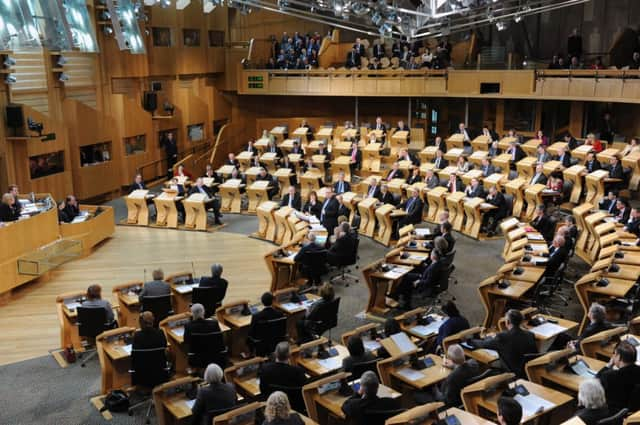Comment: Landowners across Scotland should act now


NEW procedures for registering titles to land in Scotland came into force in December – and landowners in Scotland should act to ensure their land is accurately registered.
The new Land Registration (Scotland) Act 2012 means the procedures for registering titles to land in Scotland change – the first major change in registration procedures since the Land Register was established in 1979.
Advertisement
Hide AdAdvertisement
Hide AdThe Act was developed on the recommendation of the Scottish Law Commission in conjunction with comments from the Scottish Parliament, with the aim of introducing greater security, transparency and fairness in property transactions. Another aim of the legislation is to have all of Scotland mapped on the Land Register within ten years, by 2024 (with all public land registered at the halfway point of five years). Under the current system, this process could have taken centuries.
So what do the key changes in the new Land Registration (Scotland) Act 2012 mean?
The Keeper of the Registers of Scotland will be able to register titles to property in the Land Register without any application by the owner to do so – despite no change in ownership.
A transfer of a property for no payment, such as by way of a gift or on a death, will require registration in the Land Register and a full examination of title may also be required.
If you or your tenant enters into a long lease of a property (for more than 20 years) the landlord’s title to the property must be registered. This could cause administrative issues for landlords, as part of the title to their property may be registered in the Land Register and part in the Register of Sasines, making the package of documents of title more complex.
There are new procedures to address inaccuracies in the Land Register and to deal with those which cannot be corrected.
A separate title sheet, with its own Title Number, will exist for any shared land, for example communal gardens, car parks or bin stores.
Importantly, the Keeper of the Registers of Scotland will no longer have the “midas touch”, which potentially resulted in invalid titles being made good, for example, the title could include areas not in the original title.
Advertisement
Hide AdAdvertisement
Hide AdIt may be advisable to act now to register your title in the Land Register before the Keeper does so. This may benefit you, especially if the title to your property is complicated or based on old plans, or if you have a property which you intend to let on one or more long leases.
In these situations, registering your own title will likely result in a more accurate title sheet as you may have more historical information to hand than the Registers of Scotland.
The benefit of applying for registration is that you will be in control of the timing of the application. You will have to pay registration costs, which depend on the value of the property. You will also need to engage your solicitor to undertake a title examination for you.
Title to your property may be registered in the Land Register without you applying for this, for example, if the Keeper requires registration or there is a new lease or sub-lease which affects the landlord’s title. An advance registration by you can put you in control of this process.
If your solicitor is unable to confirm the accuracy of your title, the Keeper will exclude her warranty from the title, which could affect, amongst others, the value and marketability of your property.
The Keeper’s warranty confirms that, at the date of registration, the title sheet – which is your title deed, showing title conditions, rights and a plan of what you own – to which the application relates (1) is accurate and that it shows the acquisition, variation or discharge in favour of the applicant and (2) is not inaccurate (there is no encumbrance, for example a title condition, omitted from it that should be reflected in the title sheet).
• Derek Nash is head of commercial property at Lindsays www.lindsays.co.uk
The Keeper of the Registers of Scotland speaks at the conference, A World-Class Land and Property Information Database for Scotland, on Tuesday, 10 March: www.scotsmanconferences.com